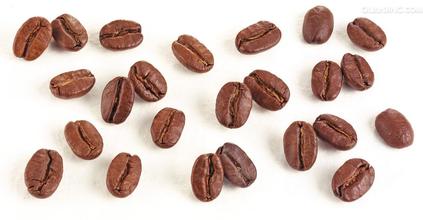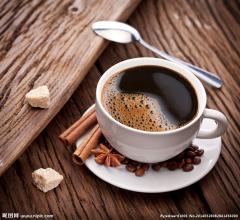Introduction to the quality of coffee bean berry treatment method, taste and flavor description method
Introduction to the quality of coffee treatment
Semi-washing, also known as "honey treatment", is a compromise between drying and washing, eliminating the need to ferment coffee fruits. Harvest → storage tank (remove impurities and unripe beans) → pulp removal machine (remove pulp and impurities) → washing pool (select light and hard beans) → sun field (or dryer) → sheller (removal of endocarp) → classification (electronic bean selector or hand selection, sieve, etc.) → outlet
The color of raw beans treated by drying is yellow, and the water content of coffee beans is generally about 11%, 12%. The advantage is that sun beans have better sweetness and mellow thickness, and less sour taste, so many coffee fans like it very much. The disadvantage is that due to the use of artificial and natural treatment methods in the process, the sun-cured beans do not look good in appearance, do not look good, the quality is unstable, and there will be greater ups and downs.
The key to ensuring the quality of coffee is to stop fermentation at the right time, because excessive fermentation can lead to the emergence of so-called smelly coffee beans. If the fermentation is insufficient or too slow, butyric acid or propionic acid will be produced, both of which will adversely affect the quality of coffee.
The fermented coffee with skin needs to be cleaned immediately after the completion of the fermentation process to terminate the process. However, after removing the mucus and before cleaning, it may be necessary to soak the coffee with skin in clean water for 12 to 24 hours to reduce the bitterness in the coffee drink.
The purpose of removing the pulp is to separate the pulp from the seed coat of coffee beans. The pulp is removed by squeezing the berries. Because ripe berries contain a lot of moisture, peeled coffee beans can easily pop out when the berries are squeezed.
The next step is to remove the mucus, which aims to remove the residue of the mesocarp that clings to the seed coat after the pulp has been removed (see the illustration of the various parts of the coffee berry). Because the mucus is insoluble in water and adheres tightly to the seed coat, it cannot be removed by simple cleaning, so it either needs to be cleaned after fermentation, or it needs to be strongly rubbed in an equipment called a mucus remover to remove coffee usually once a year. The harvest time depends on the geographical location, but usually the northern hemisphere harvests from September to March, while the southern hemisphere harvests from April to May. Coffee is usually picked by hand and can be picked off all the berries from the branches at once or selectively. The latter method is expensive and only suitable for picking Arabica coffee beans.

Important Notice :
前街咖啡 FrontStreet Coffee has moved to new addredd:
FrontStreet Coffee Address: 315,Donghua East Road,GuangZhou
Tel:020 38364473
- Prev

The influence of the altitude of coffee beans introduction to the quality of graded coffee flavor description treatment
The influence of the altitude of coffee beans the coffee beans planted in high altitude areas are hard, dense and have the potential to give full play to their special flavor. The really amazing coffees are grown between 4000 and 6000 feet above sea level, and these beans are picked carefully only during the mature season. Central American coffee is rated according to the altitude at which it grows, such as SHB (Strictly Ha)
- Next

Why do high-altitude coffee beans taste sour? What is the flavor difference between highland coffee and regular coffee
Why do high-altitude coffee beans taste sour? Generally speaking, the more deeply roasted coffee beans, the less sour, or even none, and show another kind of pure coffee characteristics. After roasting, the acid content of raw coffee beans changed greatly, among which the change of volatile acid was the biggest. So today, when we are still in the habit of deep baking, it is very difficult for us to learn from
Related
- Guji coffee producing area of Guji, Ethiopia: Humbela, Shakiso, Wulaga
- What is the most expensive variety of Qiloso in BOP multi-variety group?
- How to store the coffee beans bought home?
- Why are Yemeni coffee beans so rare now?
- Ethiopian Sidamo all Red Fruit Sun Sun Santa Vini Coffee beans
- SOE is mostly sour? What does it mean? Is it a single bean? what's the difference between it and Italian blending?
- Is Italian coffee beans suitable for making hand-brewed coffee?
- How to choose coffee beans when making cold coffee? What kind of coffee beans are suitable for making cold coffee?
- Just entered the pit to make coffee, what kind of coffee beans should be chosen?
- Can only Japan buy real Blue Mountain Coffee? What are authentic Jamaican Blue Mountain coffee beans?

